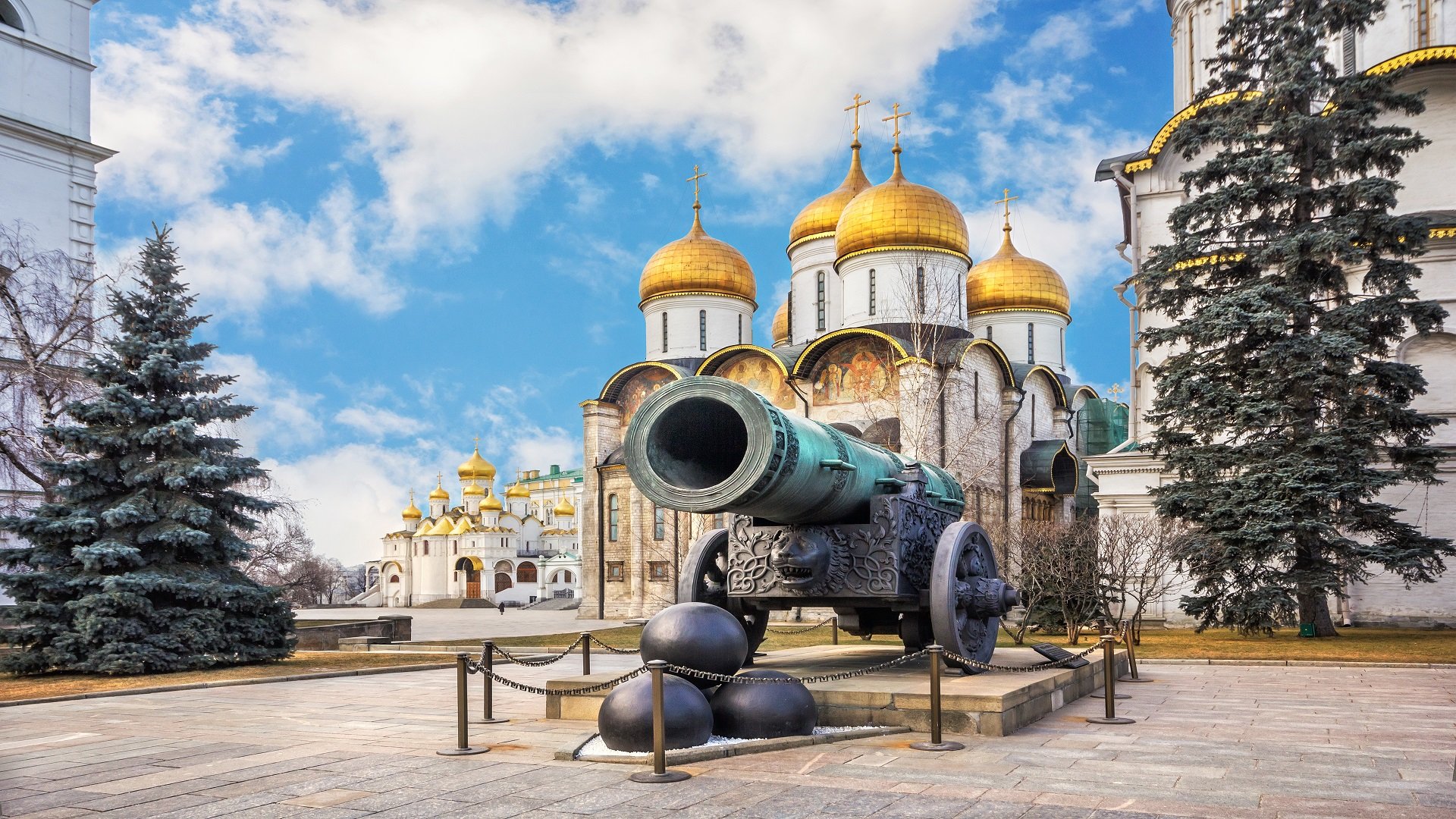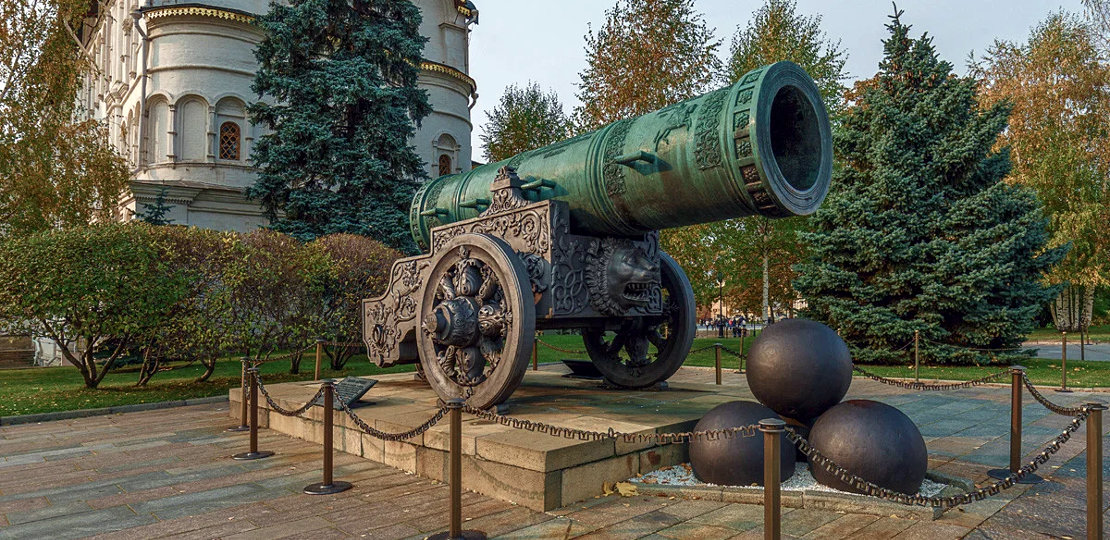Tsar Cannon was cast in 1586 by order of Tsar Fyodor Ioannovich as an active weapon for the defense of the Kremlin after the news of the approach of the Crimean Tatars. It was made of bronze in a few months at the Moscow Cannon Yard, in full compliance with the weapon standards of those years. The total weight of the gun is about 39, 312 tons, barrel length 534 cm, caliber – 890 mm. In fact, this is a bombard – a combat battering gun with an extension at the end of the muzzle, firing at a flat or hinged trajectory with buckshot with a total weight of up to 800 kg. The fuse comes from the side of the barrel. Rate of fire – up to 6 shots per day. It has not yet been clarified whether the cannon had a chance to fire. During the restoration, the experts found particles of gunpowder, but the walls inside were not damaged and there were no scratches from the nuclei. According to legend, the ashes of False Dmitry were scattered with a shot from the Tsar Cannon.
On the right side of the cannon, the ruler himself is depicted on a horse in a crown and with a scepter, next to it is the signature that this is the Grand Duke Fyodor Ivanovich, the Sovereign of Great Russia. There is a version that this gave the name to the gun (another version of the name is «Russian shotgun»). On the left – an inscription that it was made by «the literary man Ondrei Chokhov». Several stripes with a ligature ornament run along the circumference of the trunk.

Initially, the cannon stood on wooden rolls. But in 1835, according to the sketches of academician A.P. Bryullov, a cast-iron carriage was cast – a real work of art. It served as a decorative function and was intended to emphasize the status of the tool. Additionally, decorative cores were cast from cast iron (hollow inside, they weigh 1970 kg each).
It took 200 horses to get to Red Square. At first, the cannon was installed near the Execution Ground for the defense of the Spassky Gate, then it was moved several times: under Peter I in 1706 – to the courtyard of the Kremlin Arsenal, later – to the Armory (while installed on a new carriage). In 1960, during the construction of the Kremlin Palace of Congresses, Tsar Cannon was transported to the Ivanovskaya Square of the Kremlin, which she left only for restoration in Serpukhov in 1970 and returned in 1980.

